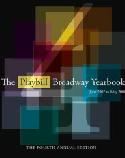SITE GUIDE
SEARCH
REVIEWS
REVIEW ARCHIVES
ADVERTISING AT CURTAINUP
FEATURES
NEWS
Etcetera and
Short Term Listings
LISTINGS
Broadway
Off-Broadway
NYC Restaurants
BOOKS and CDs
OTHER PLACES
Berkshires
London
California
New Jersey
Philadelphia
Elsewhere
QUOTES
TKTS
PLAYWRIGHTS' ALBUMS
LETTERS TO EDITOR
FILM
LINKS
MISCELLANEOUS
Free Updates
Masthead
A CurtainUp Review
Taking Over
|
It's a beautiful day in the neighborhood.-- .— Danny Hoch
|

Danny Hoch
(Photo: Joan Marcus)
|
Director Tony Taccone can take pride in many aspects of the production and Hoch scores in pricking our conscience even though he risks having Taking Over labeled as an unabashed polemic. Hoch tells his story of how history is being erased in his Williamsburg neighborhood through nine multi-ethnic characters representing a cross-section of long-time residents, artists, entrepreneurs, greedy developers, and even himself. He portrays this spectrum of Williamsburg-ites with his usual panache but nearly all of his skits are infused with enough anger to be off putting and make some sensitive playgoers head for the exit.
Hoch does succeeds in giving us the raw truths about how developers have blatantly steamrollered their way through the Williamsburg community. He is a self-described "flag-waver for anti-gentrification," has a heyday having his "cast" uncover the complex issues underpinning gentrification. The author-performer's being a Williamsburg native gives Taking Over an added autobiographical depth, not an objective story told for fun but a painful tale culled from personal experience.
Set designer Annie Smart has imbued the piece with a cinematic quality. She's stripped the stage of most embellishments, and gives us filmic outlines of condo buildings, lofts, cafes, and generic brick buildings with stoops. This works to Hoch's advantage as it gives him more than enough space to enact his characters' idiosyncracies and reeconstitute their culture-specific world.. As in the past he proves himself to be a chameleon-like monologuist who has no difficulty shifting gender, class, status, or ethnicity. As writer and performer, he talks as well as writes convincing street corner vernacular.
The gallery of characters are interesting to a point but don't offer us any piercing revelations. The first poison-pen sketch presents Robert, who bookends the piece. He is the beer-swilling Polish-Puerto Rican, who is celebrating Williamsburg's Community Day and heritage. Dressed in a blue-plaid shirt and black pants, he rants at the ethnically-diverse locals on the block, and engages the audience in a blistering tete-a-tete about race, class, and his neighborhood's demise. Is he the performer's alter-ego? Or is he simply the next pathetic victim of the yuppie infiltration?. More amiable is Kaitlin, a hip Midwesterner and NYU dropout who's enthralled by her chic milieu. Ready to settle herself in some prime real estate, she is unwittingly a catalyst for the ongoing gentrification. Marian represents the heart of the community. She's an African American in her 60s, relaxing on the stoop, talking with an old friend as she watches the neighborhood children. Stuart is a hot-shot developer with dollar signs in his eyes. A pathological multi-tasker, he practices Yoga and finesses his business deals simultaneously.
A meta-theatrical twist tossed into the show's final moments has Hoch, as himself reading letters to the current audience purportedly penned by people who attended previous performance. In this non-stagey letter reading Hoch wrestles with the gentrification issues raised and confronts his personal demons. Given the polemical bent of Hoch's approach, your reaction to one viewer's advice that it needs to be, er, "gentrified." may well may well come off as sound advice. On the other hand, if the unsettling hit-homeness of the piece makes you uncomfortable, this is a case of mission accomplished
|
Taking Over Written and performed by Danny Hoch Directed by Tony Taccone Sets: Annie Smart Costumes: Annie Smart Sound: Walter Trarbach Lighting: Alexander V. Nichols Composer: Asa Taccone Stage Manager: Barbara Red The Public Theater/Martinson Hall at 425 Lafayette Street 212/967-7555 From 11/07/08; opening 11/23/08/, closing 12/14/08. Tuesday @ 7pm, Wednesday @ 2pm & 8pm, Thursday @ 8pm, Friday @ 8pm, Saturday @ 2pm & 8pm, Sunday @2pm. Reviewed by Deirdre Donovan based on November 21st press performance Running time: 1 hour; 40 minutes with no intermission. |
|
REVIEW FEEDBACK Highlight one of the responses below and click "copy" or"CTRL+C"
Paste the highlighted text into the subject line (CTRL+ V): Feel free to add detailed comments in the body of the email. |






